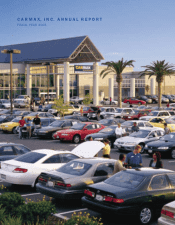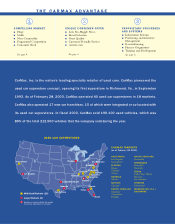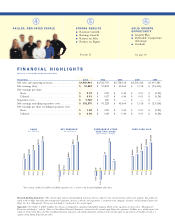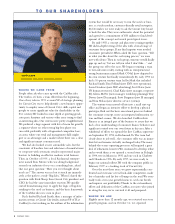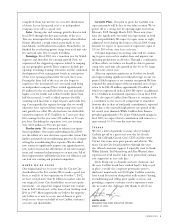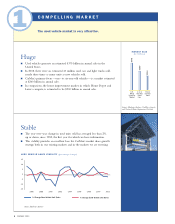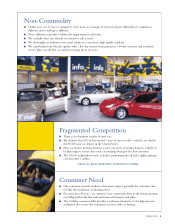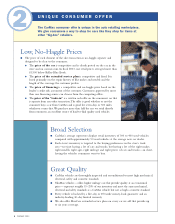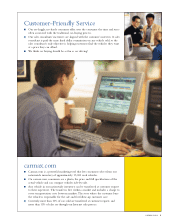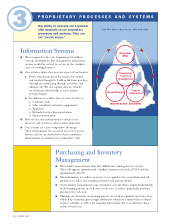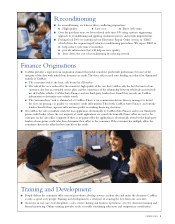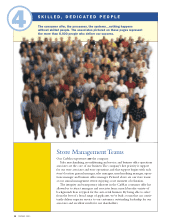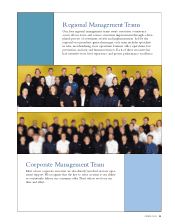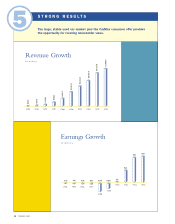CarMax 2003 Annual Report Download - page 4
Download and view the complete annual report
Please find page 4 of the 2003 CarMax annual report below. You can navigate through the pages in the report by either clicking on the pages listed below, or by using the keyword search tool below to find specific information within the annual report.
2CARMAX 2003
TO OUR SHAREHOLDERS
system that would be necessary to run the used car busi-
ness as a truly modern, customer-friendly retail enterprise.
By December, we were ready to ask the Circuit City board
to back the idea.They were enthusiastic about the potential
and agreed to a commitment of $50 million to fund devel-
opment of the concept and several prototypical stores.
By mid-1992, a concept and plan were coming together.
We did in-depth testing of the idea with a broad range of
consumer focus groups. If any final impetus were needed,
consumers provided it.When asked the basic question,“Tell
us what you like about the car buying process,” we were
met with silence.Then in each group, someone would finally
pipe up and say,“Let me tell you what I don’t like…” and
the group was off to the races.We began recruiting a team
to turn idea into reality, starting with an entrepreneurial
young businessman named Mark O’Neil (now departed to
his own venture but fondly remembered). By early 1993 we
had a 10-person venture team led by Mark that included
Richard Smith,Tom Folliard (now EVP, store operations),
Laura Donahue (now AVP, advertising), Scott Rivas (now
VP, human resources), Chad Kulas (now manager, corporate
IS), Gloria McFee (now manager, workshop planning),Troy
Downs (now IS manager), Scott Bergman (now IS manager)
and Tom Nolan (now director, service systems).
The venture team moved off site into a small start-up
office and began an intensive effort to develop a physical
prototype, flesh out the basic executional processes behind
the consumer concept, create an integrated information sys-
tem and find a name. We also launched CarMax Auto
Finance as an integral part of the business to assure that we
had a clear understanding of consumer finance behavior and
significant control over our own future in this area. After a
whirlwind of effort, we opened the first CarMax superstore
on September 29, 1993, in Richmond,Va.The team had
clearly done its job well…the consumer offer was an imme-
diate hit and remains virtually unchanged today.The many
behind-the-scenes operating processes still required a great
deal of refinement, however.We continued to develop, refine
and re-work them as we opened a second store in Raleigh
in 1994, two in Atlanta in 1995 and one each in Charlotte
and Orlando in 1996. By early 1997, we were ready to
begin our national rollout.We took the company public in
February 1997 as a tracking stock of Circuit City.
Over the next three years, we grew exponentially, con-
fronted and overcame several look-alike competitors, made
lots of mistakes and hit lots of bumps in the road.We even-
tually took a two-year growth hiatus to catch our breath
and improve our profitability.Thanks to the extraordinary
efforts and dedication of the CarMax associates who joined
us along the way, we’ve survived it all and prospered.
WHERE WE ARE
Slightly more than 12 months ago, we restarted our store
growth program, and on October 1st, we separated
AUSTIN LIGON
PRESIDENT AND CHIEF EXECUTIVE OFFICER
WHERE WE CAME FROM
People often ask who came up with the CarMax idea.
The truth is, it’s been a team effort from the beginning.
One of my tasks in 1991 as senior VP of strategic planning
for Circuit City was to help identify a new business oppor-
tunity to employ some of Circuit City’s skills, capital and
people to create significant value for shareholders in the
21st century.We looked in some depth at sporting goods,
auto parts, furniture and various other areas trying to find
an interesting idea. Our criteria were pretty straightforward.
We preferred a large segment with lots of room for growth;
a segment where no other strong big-box player was
successful, preferably with a fragmented competitor base;
an arena where our retail and management skills might
give us an advantage; and a market where there was a clear
and significant unmet consumer need.
We had also looked at new automobile sales, but the
constraints of franchise laws and reluctance of manufacturers
to cooperate with systematic retailers represented major
barriers to building an effective modern retail business.
Then, in October of 1991, a local Richmond entrepre-
neur named Ron Moore, who was doing background
research on industries for us on a consulting basis, asked
that one great question:“Have you ever thought about
used cars?”The answer was no, but it struck me immedi-
ately as the path to a truly “Big Idea.”When I shared the
question with Rick Sharp, then Circuit City president and
CEO, he had the same immediate reaction.We quickly
started brainstorming ways to apply the logic of big-box
retailing to the used car business, and the basic framework
of the CarMax idea was soon in place.
Rick drafted Richard Smith, then a manager of infor-
mation systems at Circuit City (today assistant VP of IS at
CarMax) to start working on the outlines of the information

